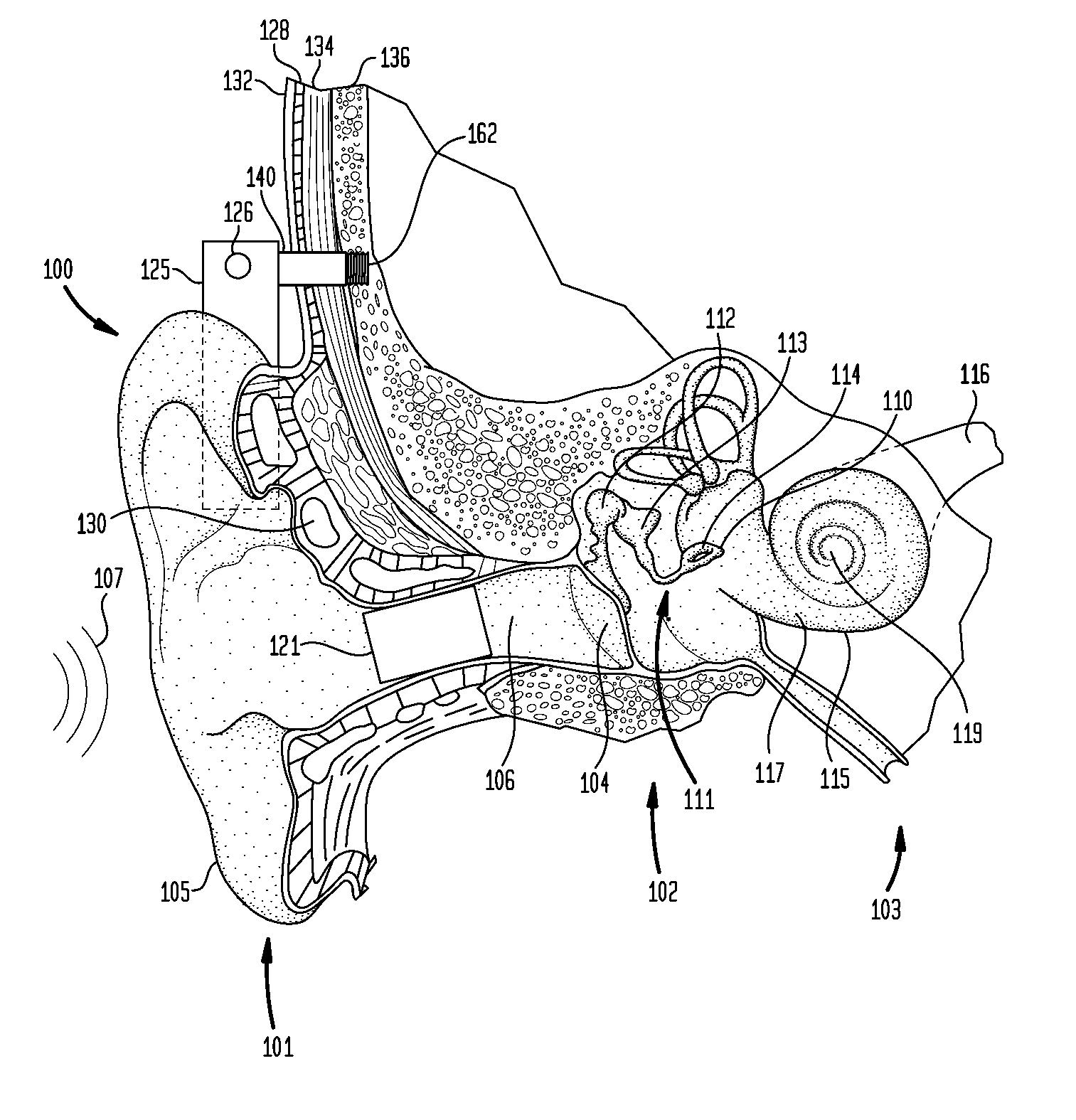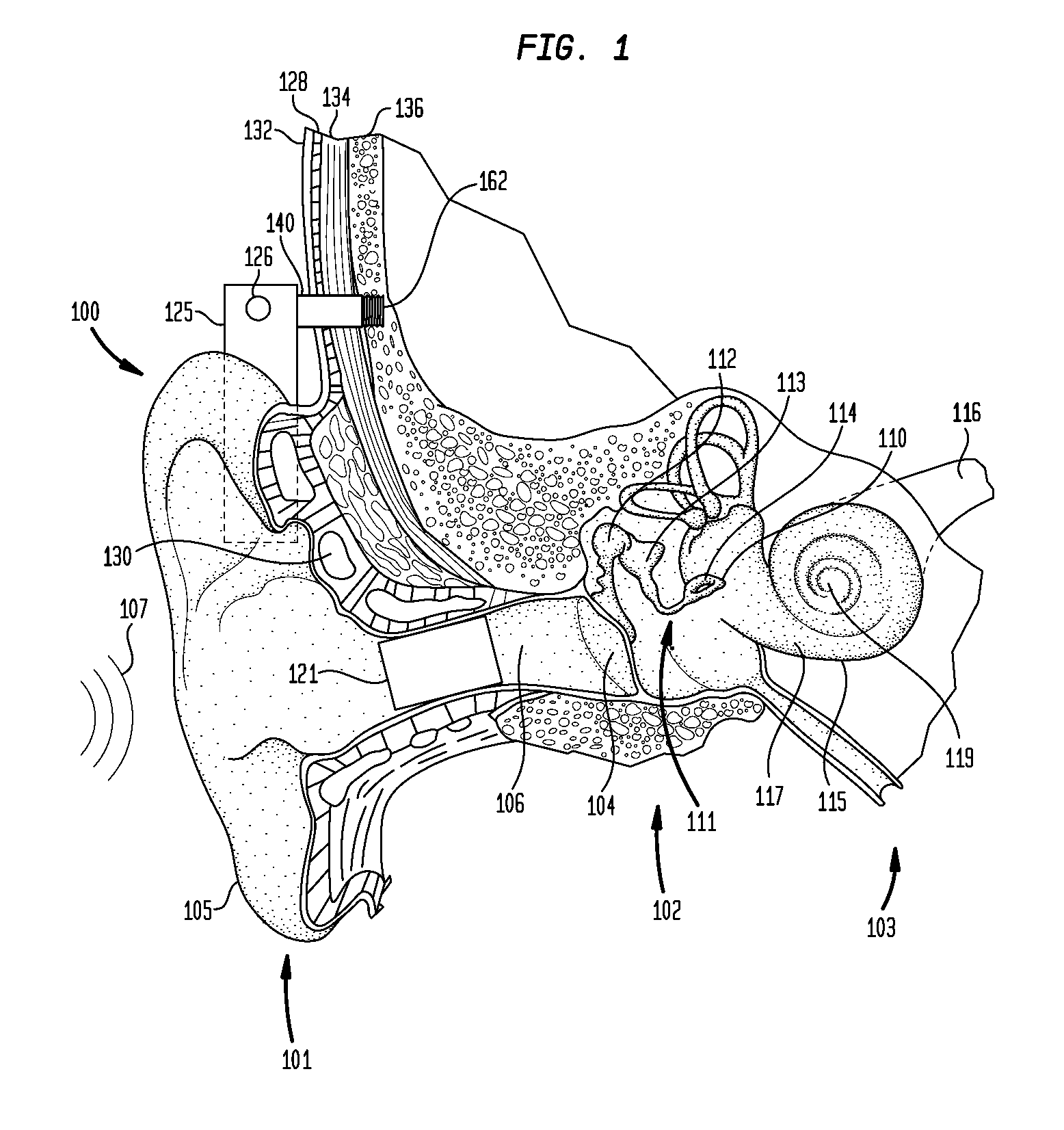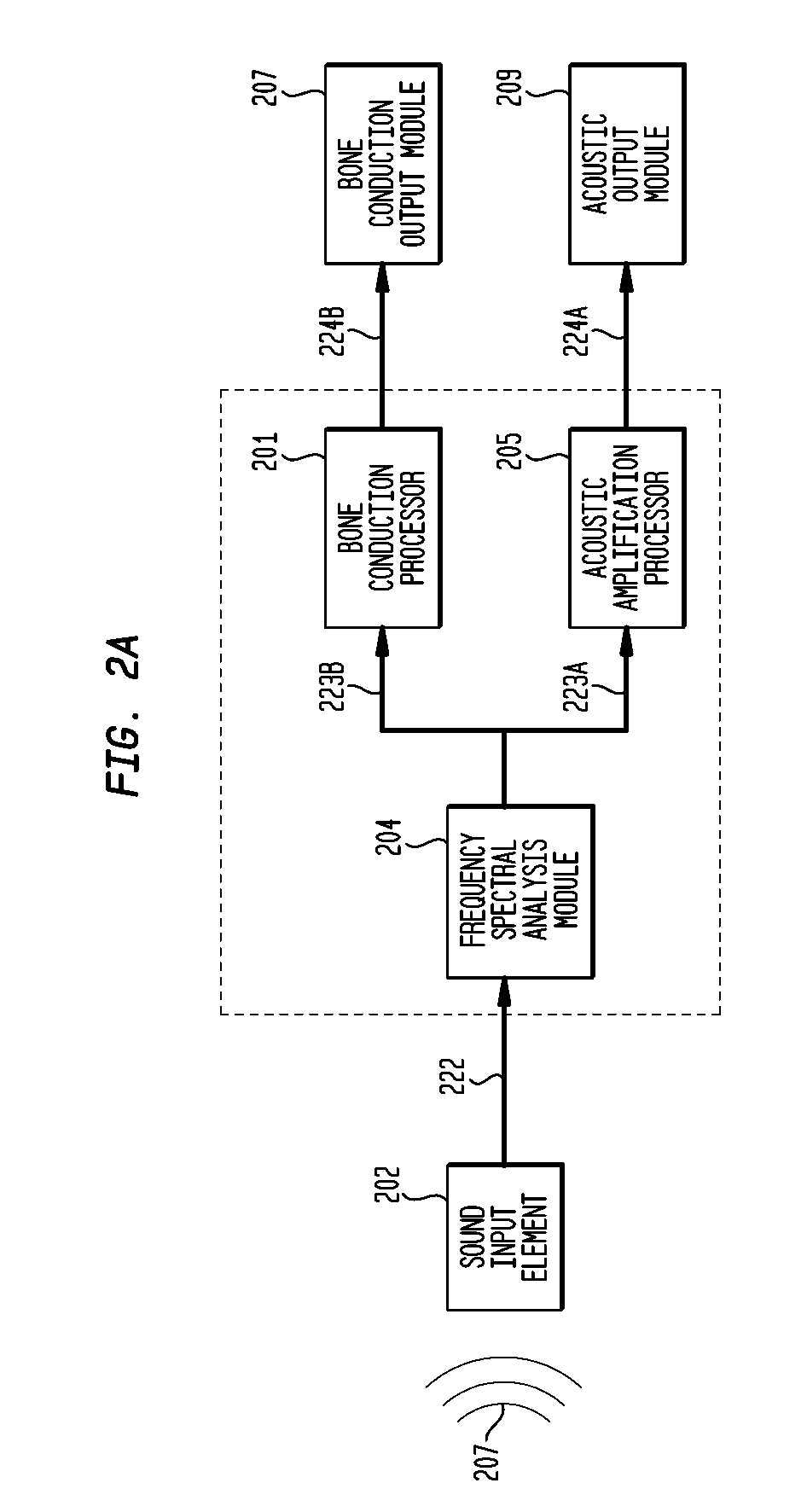Multi-mode hearing prosthesis
a hearing prosthesis and multi-mode technology, applied in the field of hearing prosthesis, can solve the problems of conductive hearing loss, hearing loss, impeded normal mechanical pathways that conduct sound to hair cells in the cochlea, etc., and achieve the effect of enhancing the hearing of the recipien
- Summary
- Abstract
- Description
- Claims
- Application Information
AI Technical Summary
Benefits of technology
Problems solved by technology
Method used
Image
Examples
Embodiment Construction
[0023]Embodiments of the present invention are generally directed to a multi-mode hearing prosthesis for analyzing a received acoustic sound signal and separating the sound signal into its frequency components such as, for example, high-frequency and low-frequency components. The signal components are provided to various stimulation modules which further processes the received component and transmits them to the recipient. According to one embodiment of the present invention, high-frequency components are provided to a bone conduction stimulation module which converts the received sound signal component into a mechanical force to be delivered via a recipient's skull to the recipient's hearing organs. The multi-mode hearing prosthesis includes a sound input component, such as microphone, to receive the acoustic sound signal, a spectral analysis module configured to analyze and separate the received sound signal into high-frequency and low-frequency components, and two or more stimula...
PUM
 Login to View More
Login to View More Abstract
Description
Claims
Application Information
 Login to View More
Login to View More - R&D
- Intellectual Property
- Life Sciences
- Materials
- Tech Scout
- Unparalleled Data Quality
- Higher Quality Content
- 60% Fewer Hallucinations
Browse by: Latest US Patents, China's latest patents, Technical Efficacy Thesaurus, Application Domain, Technology Topic, Popular Technical Reports.
© 2025 PatSnap. All rights reserved.Legal|Privacy policy|Modern Slavery Act Transparency Statement|Sitemap|About US| Contact US: help@patsnap.com



